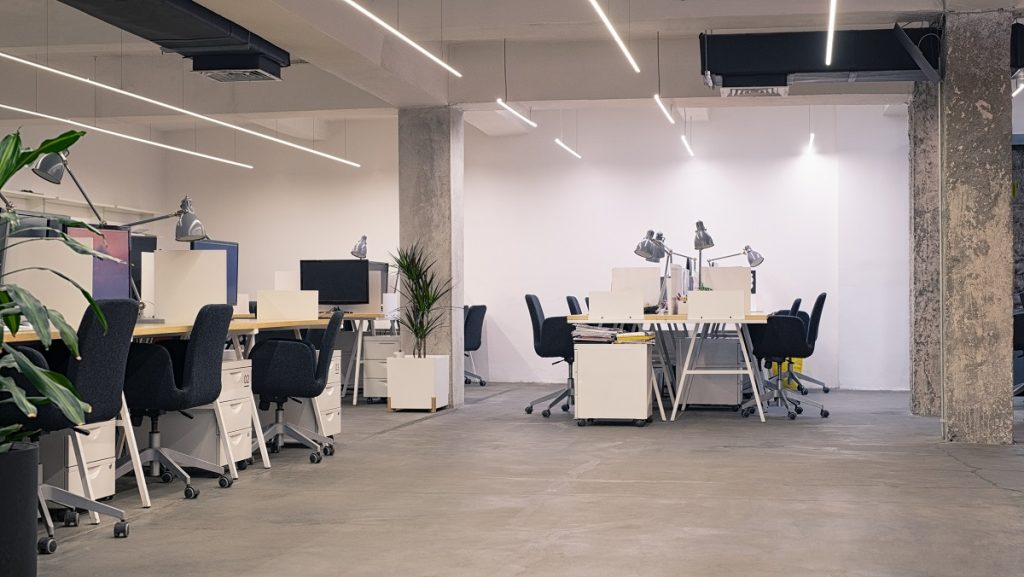- An efficient office layout improves productivity, includes functional areas, and utilizes systems for comfort and organization.
- Customize office space to reflect brand, culture, and the nature of the business for better employee engagement.
- Prioritize employee comfort by including ergonomics and sound-buffering materials to reduce distractions and stress.
- Investment in durable, ergonomic furniture like desks, chairs, and cubicles impacts productivity and employee well-being.
In today’s fast-paced business world, creating a productive workspace is more crucial than ever before. A well-designed workspace can enhance your employee’s productivity and create a friendly environment within which to work. Inefficient space utilization can result in lost time, decreased job satisfaction levels, and an overall decrease in employee output. With that in mind, it’s crucial to optimize office layouts for efficiency. Here are some insightful tips and ideas on how you can develop a more efficient office layout.
Start with the Basics

A highly efficient office layout begins with the basics. First and foremost, ensure the office layout is functional. Consider what the office space is being used for and map out the necessary areas that should occupy the workplace.
This can consist of private offices, conference rooms, open work areas, reception or waiting areas, etc. Afterward, focus on the technical details, such as heating, cooling, lighting, security systems, and storage.
A comfortable work environment ensures maximum productivity and a pleasant experience for both employees and visitors. A good storage system will help keep the office tidy, decluttered, and organized, which can lead to enhanced productivity.
Customize Your Office Layout
Every business is unique, and so should their workspace. Sufficient office customization helps to reflect the company’s culture and organizational structure. You should consider the following factors:
Branding and Culture
Branding and culture play crucial roles in fostering a conducive work environment. Incorporating your brand into the office layout helps reinforce the company’s identity and values. This can be achieved through color schemes, branded artwork, or architectural elements that reflect your corporate image.
Similarly, the office layout should foster the company culture. For instance, if your company values collaboration and open communication, designing an open office layout with communal areas can help to promote these values.
Business Nature
The nature of your business should also dictate the design of your workspace. Different industries require different types of workspaces. For instance, a tech startup might thrive in a flexible, open-plan environment, while a legal firm might need more private offices for confidential discussions. Understanding your business nature and workflow can help you design an office layout that caters to specific needs, enhances workflow, and ultimately boosts productivity.
Prioritize Employee Comfort
Employee comfort is key when optimizing office layout. Do not forget to incorporate ergonomic furniture and accessories to ensure employees’ health and safety. The working environment should accommodate the needs of all employees.
Ensure that chairs, desks, and other furniture are adjustable to create an ergonomic and comfortable workspace. Additionally, consider installing sound buffering materials, such as soundproof walls or noise-canceling headphones, to reduce noise pollution in the office, which can lead to employee distraction and stress.
Invest in Good Furniture

Investing in good furniture is an essential part of creating a productive workplace. When selecting furniture, choose pieces that are ergonomic and aesthetically pleasing. Furniture should also be durable and easy to clean for added convenience. Here are some essentials to prioritize:
Desks
The desk is essentially the engine of the workspace. It’s where most tasks are performed, from drafting reports to brainstorming on innovative ideas. Thus, an office desk should be spacious enough to accommodate laptops, documents, and other essential office supplies.
More so, prioritize investing in durable office desk furniture. They are designed to withstand the demands of a busy work environment and can provide long-term value. Take into account the rising popularity of adjustable-height desks, which offer ergonomic advantages. These desks enable users to effortlessly switch between sitting and standing positions, providing relief from back pain and encouraging proper posture.
Chairs
An office chair has a significant impact on productivity and overall employee well-being. It’s where your employees spend most of their workday, and as such, it should not only provide comfort but also support good posture.
Ergonomic chairs, designed with adjustable features, allow users to modify their chairs according to their body size and desk height. They offer adequate back support, have adjustable armrests, and allow changes in height and tilt, all to reduce the risk of musculoskeletal problems.
Cubicles
Cubicles offer a semi-private workspace that can be beneficial for employees who often engage in focused tasks. They provide a degree of separation and personal space, helping reduce distractions from surrounding activities. When designing cubicles, remember to provide enough space for employees to move comfortably and store their personal items.
Enhance the cubicles with good lighting, adequate ventilation, and personalization options to boost employee morale and productivity. Infusing elements of biophilic design, such as plants or natural light, can also enhance the aesthetic appeal of the cubicles, creating a more calm and stress-free environment.
An efficient and well-planned office layout is fundamental to business success. A carefully designed workspace can motivate and enhance employee productivity, improve their work skills, and create a friendly environment for employees and visitors. By focusing on the items listed above, you can optimize your office layout for efficiency, boost morale, and ultimately increase your bottom line.

